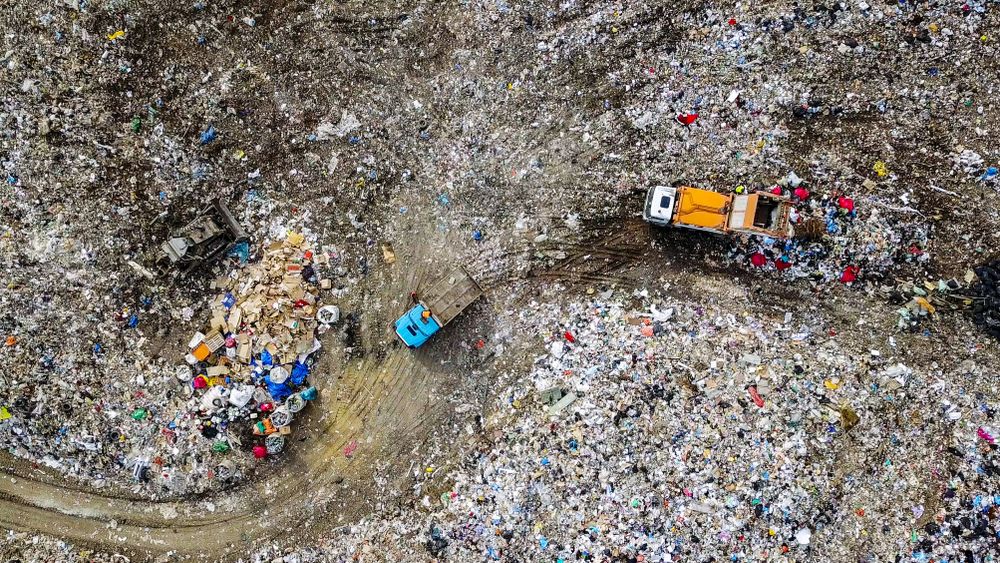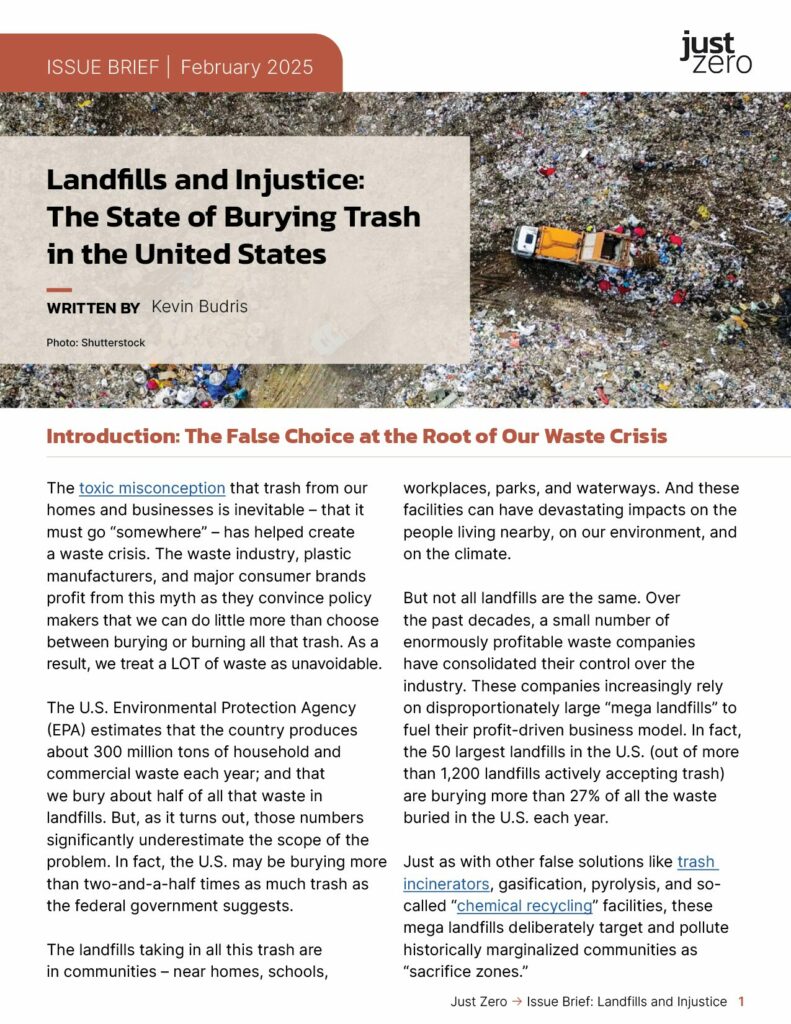
Introduction: The False Choice at the Root of Our Waste Crisis
The toxic misconception that trash from our homes and businesses is inevitable – that it must go “somewhere” – has helped create a waste crisis. The waste industry, plastic manufacturers, and major consumer brands profit from this myth as they convince policy makers that we can do little more than choose between burying or burning all that trash. As a result, we treat a LOT of waste as unavoidable.
The U.S. Environmental Protection Agency (EPA) estimates that the country produces about 300 million tons of household and commercial waste each year; and that we bury about half of all that waste in landfills. But, as it turns out, those numbers significantly underestimate the scope of the problem. In fact, the U.S. may be burying more than two-and-a-half times as much trash as the federal government suggests.
The landfills taking in all this trash are in communities – near homes, schools, workplaces, parks, and waterways. And these facilities can have devastating impacts on the people living nearby, on our environment, and on the climate.

But not all landfills are the same. Over the past decades, a small number of enormously profitable waste companies have consolidated their control over the industry. These companies increasingly rely on disproportionately large “mega landfills” to fuel their profit-driven business model. In fact, the 50 largest landfills in the U.S. (out of more than 1,200 landfills actively accepting trash) are burying more than 27% of all the waste buried in the U.S. each year.
Just as with other false solutions like trash incinerators, gasification, pyrolysis, and so-called “chemical recycling” facilities, these mega landfills deliberately target and pollute historically marginalized communities as “sacrifice zones.”
Read the full issue brief. Download now: